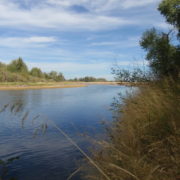Conservation and Agriculture Working Together
Teton Regional Land Trust and two eastern Idaho ranchers recently closed on conservation easements to protect their ranches for future generations. “We want to keep it this way forever,” said Boyd and Rhea Price reflecting on their land. The Prices are recently retired postal workers and cattle ranchers who own a family ranch near St. Anthony along the Henry’s Fork. In Teton Valley, hunting outfitter, Paul Gilroy, pastures horses on his ranch. Gilroy said he worked with the Land Trust on a conservation easement because he thinks “it is best for the wildlife and good for the community.”
These landowners consider their ranches to be integral to their livelihood. Both realized that income from a conservation easement would make it possible for them to keep their land and pass it down to their heirs. The Prices and Gilroy both truly wanted to see their land conserved rather than developed. They have great respect for the wildlife that relies upon the habitat along the river and creek corridors of their properties.
The Price Property, downriver from St. Anthony in Fremont County, is bordered by land owned and managed by the BLM and the Idaho Department of Fish and Game along the Henry’s Fork. Their land has about a half mile of Henry’s Fork river frontage and wetlands associated with the river. Wildlife that use this property include waterfowl, water birds and raptors, including Bald Eagles, as well as big game including moose and white-tailed deer. In addition to wildlife habitat, scenic open space views of agricultural lands, riparian areas, and the Henry’s Fork of the Snake River have been protected for members of the public traveling along county roads and floating this section of the Henry’s Fork just above the Red Road Bridge.
Gilroy’s land lies just outside the city of Driggs in Teton County, bordering additional private land preserved by a conservation easement to the north. Approximately one quarter of a mile of Teton Creek and three quarters of a mile of Spring Creek flow through the property. Mature cottonwoods and willows line the creek corridors providing habitat for white-tailed deer, elk, raptors, and songbirds. The conservation easement provides scenic open space for the community and has eliminated significant residential development potential from this section of the Teton Creek Corridor, keeping the land open for continued agricultural uses.
A conservation easement is a voluntary, legal agreement between a landowner and the Land Trust that limits certain uses of the land – like large scale subdivision – in order to conserve the natural and traditional values of the land. Landowners grant conservation easements to protect the resources of their property, while retaining the rights of private ownership. Teton Regional Land Trust has been working across eastern Idaho for over 25 years and has worked with over 120 families to protect over 33,000 acres. Our farmers and ranchers, like Boyd and Rhea Price and Paul Gilroy, are under tremendous pressure to develop their land. Conservation easements are a tool to compensate and provide financial support to farmers and ranchers so they can pass their farm on to the next generation.



